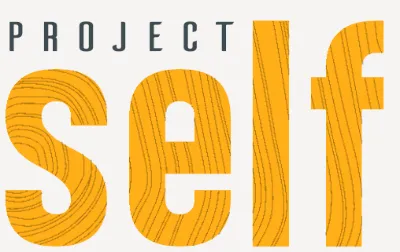Feeling stuck is a common experience and yet there are different energies within stuckness, so it’s important to explore in depth what someone means when they describe themselves as stuck.
We generally have three choices when it comes to a situation. Move away from it, towards it or to stay where we are (standing still). Moving away can be either backing away – withdrawing or contracting – or heading away and leaving proactively. Towards can be in gentle, welcome invitation and curiosity, or pushing into/against. Staying where we are can bring different emotions depending on our attitude to the position. Ambivalence or neutrality. Acceptance and peace. Resentment and anger. Frustration and powerlessness. If emotions with high energy about the situation are directed inwards towards the self, they can create an increasing spiral of self-criticism around lack of capacity and so lower self esteem which draws energy downwards into a collapse; so increasing a sense of stuckness.
Stuckness is often the sense of not feeling able to take the next steps and feeling there is nothing to grab onto; a lack of obvious resource or leverage. There may also be a sense of isolation and exhaustion in relation to a potentially unyielding context. any Effort may feel it has little impact to effect change and there may appear to be no obvious solution. Stuckness is often described through a loss of motivation and energy, maybe even futility; so a lethargy, a loss of momentum which contains a kind of weightiness or emptiness.
Another element of stuckness may be not knowing what to do or where to start or how to ; so a form of helplessness, a kind of uncertainty. There could be an element of lostness and confusion that comes with the not knowing, a kind of dulling in cognition that comes with beginning to give up or give in, in response to the lack of purposeful vision, clarity or directed action.
What images come to your mind when you imagine being stuck? Stuck: in the mud/ between a rock and a hard place/on a ledge/in a boat without a paddle/in a rut?
The metaphorical scenarios above are potentially life threatening, they could elicit fear, panic, anxiety. Our nervous system is likely to activate survival responses to try and get us out, to facilitate escape. If we find we can’t flee and break the scenario, or can’t fight clear through struggle, we are likely to go into a kind of freeze or collapse. A temporary immobilisation.
To address immobilisation we need to bring in a small movement, a small flicker of energy to affect our sense of position. A simple movement can free us from the sensation of being caught, trapped or powerless. Once we connect again with our embodied capacity to move, our state changes. Once our state changes, the mental story created around it, the perception about the situation, about ourselves, often layered with unnecessary complexity, can be unfolded. It’s often panicked thinking that leads to a sense that we are going round and round and can’t find a way out.
The story that goes with the sensation of stuckness is often about not being able to see the next steps, the way forward (not simply a way out), of not knowing which way to turn. Of not being able to see options, but also not finding any available options viable or as having preference. This mental landscape may become calculated, contested and complex and the sense of stuckness increasingly entrenched. There’s an element of circularity as the mind continually loops around a stagnant position of re-play. This type of thinking can be untwisted yet there is often within it an imagined movement which isn’t actioned due to fear of committing to consequences and indecision.
So what is it to be stuck?
In its essence, stuckness is the felt sense of a lack of movement, being at a standstill; but, what is often unrealised is that it is with a sense of possibility, of otherness. Often there can be frustration or struggle against feeling hindered; we are unwilling to be at rest, in the position of ‘stand still’, there is some sense of being impeded, of being brought to it. Or in finding we are not able to move, some sense of constraint which we wish to overcome, resistance, even if that constraint has been created from within our selves. There is an energy, a desire in the not wanting to remain.
Stuckness is only named as such when we can’t tolerate standing still.
Stuckness is not a condition of ‘hereness’, it’s a place of in betweenness, a perceived limited capacity to move into the next place, although we sense it’s there. It’s a non-movement between leaving and arriving, a suspension. Stuckness is a visceral feeling of not knowing what to do from here, about what’s next. Yet it’s a part of getting there. This reminds me of a joke about a person asking someone for directions and the reply being; “yes, I can direct you there, but you don’t want to start from here”.
